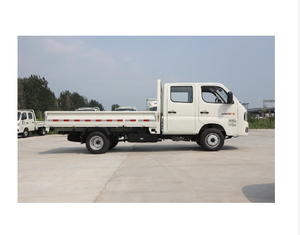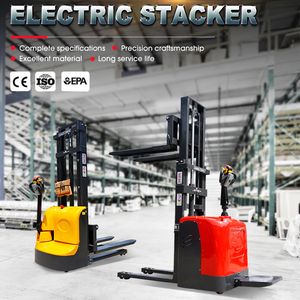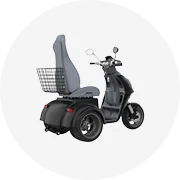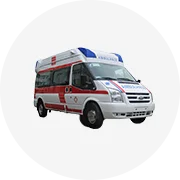Types of Double Cab Trucks
A double cab truck is a versatile pickup truck with two rows of seating and four doors, providing space for 5-6 passengers. Also known as crew cab trucks, these vehicles are perfect for families and professionals who need both passenger comfort and cargo utility.
Buyer's Tip: When selecting a double cab truck, balance your passenger space needs against bed length requirements. Remember that increased cab space typically means a shorter truck bed unless you opt for a longer wheelbase model.
Full-size Double Cab Trucks
The most spacious option with comfortable seating for 5-6 passengers, including ample legroom for tall adults in the rear seats.
Best for: Families, work crews, and those needing maximum interior space
Popular models: Ford F-150, Chevrolet Silverado 1500, Ram 1500
Midsize Double Cab Trucks
A balanced option offering decent passenger space for 4-5 people while maintaining good fuel efficiency and maneuverability.
Best for: Urban drivers, budget-conscious buyers, and casual truck users
Popular models: Toyota Tacoma, Chevrolet Colorado, Ford Ranger
Luxury Double Cab Trucks
High-end trucks with premium materials, sophisticated technology, and comfort-focused features for a car-like experience.
Best for: Executives, professionals who transport clients, and comfort-prioritizing users
Popular models: GMC Sierra Denali, Ram 1500 Limited, Ford F-150 Platinum
Heavy-Duty Double Cab Trucks
Powerful work-focused trucks with enhanced towing capacity, payload ratings, and durable construction for demanding jobs.
Best for: Contractors, construction workers, and heavy hauling applications
Popular models: Ford Super Duty F-250, Ram 2500, Chevrolet Silverado 2500HD
| Truck Type | Seating Capacity | Avg. Towing Capacity | Avg. Fuel Economy | Best Use Case |
|---|---|---|---|---|
| Full-size | 5-6 people | 7,000-13,000 lbs | 17-22 MPG | All-purpose family and work use |
| Midsize | 4-5 people | 3,500-7,000 lbs | 19-25 MPG | Urban driving, moderate hauling |
| Luxury | 5 people | 7,000-12,000 lbs | 16-20 MPG | Comfortable transportation, upscale image |
| Heavy-Duty | 5-6 people | 14,000-35,000+ lbs | 14-18 MPG | Construction, commercial hauling |
Specifications of Double Cab Trucks
Double cab trucks come with a wide range of specifications designed to balance passenger comfort with utility functionality. Understanding these key specifications will help you select the right truck for your specific needs.
Vehicle Size
Length: 5.3-6.3m
Width: 1.8-2.0m
Height: 1.7-2.0m
Seating Capacity
5-6 passengers
Two full rows of seating
Spacious rear seat area
Cargo Bed Size
Length: 1.5-2.4m
Shorter than single cab
Various bed options available
Fuel Efficiency
15-25 MPG combined
Varies by engine type
Hybrid options available
| Specification | Typical Range | Considerations |
|---|---|---|
| Towing Capacity | 2,000-7,000 lbs (standard models) Up to 35,000+ lbs (heavy-duty) |
Engine size, rear axle ratio, and truck frame design all impact towing ability |
| Safety Features | Standard: Airbags, ABS, stability control Advanced: Forward collision warning, lane departure warning |
Newer models offer comprehensive safety packages with emergency braking systems |
| Drive Type | 2WD (rear-wheel drive) 4WD (four-wheel drive) AWD (all-wheel drive) |
4WD provides better off-road capability, while 2WD offers better fuel economy |
| Engine Options | V6, V8, Diesel, Turbocharged | Engine choice affects performance, fuel economy, and towing capabilities |
Maintenance Requirements for Double Cab Trucks
Proper maintenance is essential for maximizing the lifespan and performance of your double cab truck. Following these recommended maintenance intervals will help prevent costly repairs and ensure reliable operation.
Maintenance Tip: Keep a detailed maintenance log for your double cab truck. This documentation not only helps you stay on schedule with required service but also increases your truck's resale value by demonstrating proper care to potential buyers.
| Maintenance Task | Recommended Interval | Importance | DIY Difficulty |
|---|---|---|---|
| Oil Change | Every 5,000-10,000 km | Critical - prevents engine wear and contamination | Easy |
| Air Filter Replacement | Every 40,000 km or as needed | High - ensures proper engine air intake | Easy |
| Tire Rotation | Every 8,000-10,000 km | High - promotes even tire wear | Medium |
| Brake Inspection | Every 15,000 km | Critical - ensures safety and stopping power | Medium |
| Engine Tune-up | Every 30,000 km (spark plugs) | High - maintains engine performance | Medium to Hard |
| Transmission Fluid | Every 50,000-100,000 km | High - prevents transmission failure | Hard |
| Differential Fluid | Every 50,000 km | Medium - ensures smooth operation | Hard |
Important: Always refer to your specific truck's owner manual for the manufacturer's recommended maintenance schedule. Modern trucks often have different requirements based on the engine type, driving conditions, and usage patterns.
How to Choose a Double Cab Truck
Selecting the right double cab truck requires careful consideration of your specific needs, budget, and intended use. This comprehensive selection guide will help you navigate the key factors to consider before making your purchase.
Consider Your Purpose
Evaluate how you'll primarily use the truck to determine the features you need.
- Work use: Focus on payload capacity, towing ability, and durability
- Family use: Prioritize safety features, cabin space, and comfort
- Off-road adventures: Look for 4WD, ground clearance, and specialized suspension
Budget Considerations
Calculate both upfront and ongoing costs before committing.
- Initial purchase price (new vs. used options)
- Insurance premiums (larger trucks often cost more)
- Fuel economy impacts on operating costs
- Maintenance expenses vary by brand and model
Comfort and Space
Assess the interior dimensions and features for your needs.
- Rear seat legroom (critical for adult passengers)
- Headroom throughout the cabin
- Seat material and adjustability options
- Interior storage solutions and organization
Safety Features
Modern trucks offer extensive safety technologies.
- Active safety: collision warning, automatic emergency braking
- Passive safety: airbag placement and coverage
- Driver assistance: blind spot monitoring, lane departure warning
- Towing safety features for heavier loads
Selection Tip: Always test drive multiple trucks in similar conditions to your everyday use. Pay attention to visibility from the driver's seat, turning radius, and how the truck handles when loaded - factors that significantly impact your daily driving experience.
DIY Maintenance and Replacement Guide
Many double cab truck owners can save money and gain satisfaction by performing basic maintenance and parts replacement themselves. Follow these structured steps for successful DIY truck maintenance.
Gather Necessary Tools and Materials
Before beginning any DIY maintenance task, collect all required tools:
- Basic hand tools (screwdrivers, pliers, wrenches, sockets)
- Vehicle-specific specialty tools when needed
- Quality replacement parts from reputable suppliers
- Service manual for your specific truck model
- Safety equipment (gloves, eye protection, proper jack stands)
Prepare Your Workspace and Vehicle
Create a safe environment for your DIY project:
- Park on a level surface and engage the parking brake
- Disconnect the battery if working on electrical components
- Allow the engine to cool completely if performing engine work
- Use proper jack stands when working under the vehicle
- Organize your workspace to prevent lost parts or tools
Follow Proper Disassembly Procedures
When removing components:
- Document the process with photos for reassembly reference
- Keep track of all fasteners and their locations
- Use plastic bags labeled with component names to store parts
- Follow manufacturer-specified procedures and torque specifications
- Clean areas around components before removal to prevent contamination
Install New Parts Properly
During installation:
- Clean all mounting surfaces thoroughly
- Apply recommended lubricants or sealants as specified
- Tighten fasteners to proper torque specifications
- Install components in the correct orientation
- Double-check all connections before final assembly
Test and Verify Your Work
Complete the process by ensuring proper function:
- Inspect for loose connections or forgotten tools
- Test the system before fully reassembling surrounding components
- Check for leaks or unusual noises
- Monitor for proper operation over the next few days
- Document the maintenance in your vehicle records
Safety Warning: Never attempt repairs beyond your skill level, especially those involving critical safety systems like brakes, steering, or airbags. If you're unsure, consult a professional mechanic to avoid creating potentially dangerous situations.
Frequently Asked Questions
A Double Cab Truck, also known as a crew cab truck, is a pickup truck featuring four full-sized doors and two complete rows of seating that can accommodate 5-6 passengers comfortably. It offers the versatility of a spacious interior cabin for passengers while maintaining the utility of an open cargo bed for hauling materials.
Double cab trucks offer the most interior space compared to other truck cab configurations:
- Single Cab: Has only one row of seating and two doors, offering the longest cargo bed but minimal passenger space
- Extended Cab: Features smaller rear doors and a cramped second row with limited legroom, suitable for occasional passengers
- Double/Crew Cab: Provides four full-sized doors and spacious seating for adults in both rows, but typically has a shorter bed unless choosing a long-wheelbase model
Double Cab Trucks offer several key benefits:
- Passenger Comfort: Spacious interiors with full-sized rear seats and ample legroom
- Versatility: Ability to transport both people and cargo efficiently
- Family-Friendly: Easily accommodates child safety seats and family gear
- Storage: Additional interior storage space under and behind rear seats
- Resale Value: Double cab configurations typically retain value better than other cab styles
- Weather Protection: Allows for secure, climate-controlled storage of valuable items inside the cabin
The average dimensions of a Double Cab Truck vary by manufacturer and model, but generally fall within these ranges:
- Length: 20-22 feet (6.1-6.7 meters) overall
- Width: 6.5-7 feet (2.0-2.1 meters)
- Height: 6-6.5 feet (1.8-2.0 meters)
- Cab Dimensions: Approximately 5 feet (1.5 meters) in length with rear legroom ranging from 35-45 inches depending on the model
These measurements can vary significantly between midsize and full-size trucks, as well as between standard and long-wheelbase models.
































































